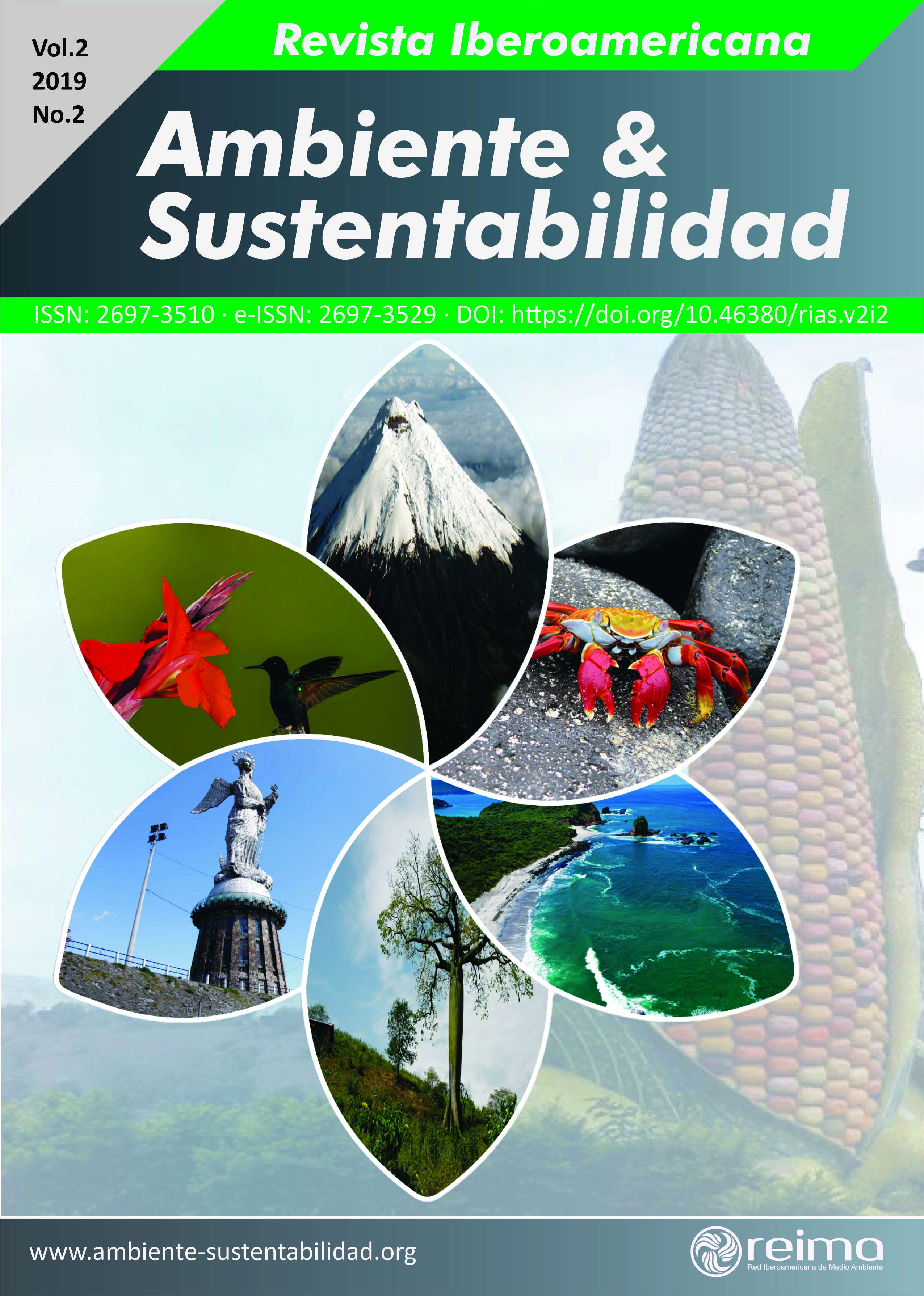Synthetize polyhydroxyalkanoates using Scenedesmus acuminatus, as an alternative for oil derivated plastics.
DOI:
https://doi.org/10.46380/rias.v2i2.51Keywords:
algae, bio plastic, biodegradable, biomass, polyesterAbstract
The indiscriminate use of plastic causes environmental problems; is estimated that around 500 year are required for its total degradation. The strategies for its recycle require the technology development and the users’ conscience. The alternatives which are made by biotechnological methods are not sustainable, due to the elevated cost compared with oil derivate. The polihidroxialcanoatos (PHA) are polyesters classified on function of the length of the acid fats chain and synthetized by microorganism with proprieties similar to the polypropylene. The present study objective is to evaluate the potential of the Scenedesmus acuminatus strains on the PHA production. A growing kinetics on 30 test tubes with 20 ml as Bold cultivate mean and 5 ml of strain. We monitored it a 72 hla frequency of extracellular acid fats production and cellular biomass. The acid fats presences were determinate with black sudan ink and composed microscopy at 40 X objective. From the day fifth teen on acid fats on the cellular supernatant can be seen. The acid fats were proportional to the incubation days and according to the PHA literature they are produced on cellular stress, when there is a lack of macronutrients in cultivate and high quantity of carbon. Scenedesmus has the capacity to use the CO2 as a carbon source, which reduce the operation cost.
Downloads
Metrics
References
Arroyave, R.A. L., Cardona, B.M., Agudelo, E. y Lina, M. (2013). Identificación de cepas nativas con potencial para obtención de polihidroxialcanoatos -(PHAS) en Lodos Activados. Biotecnología en el Sector Agropecuario y Agroindustrial, 11(1), 69-76. https://n9.cl/ljkl
Cruz, R. y López, A. (2013). Biopolímeros y su integración con polímeros convencionales como alternativa de empaque de alimentos. Temas selectos de Ingeniería de los Alimentos, 7(2), 42-52.
Figueiredo, V.B., Campos, I., Sousa, S., Silva, R. da, y Druzian, I. (2014). Produção e caracterização de polihidroxialcanoatos obtidos por fermentação da glicerina bruta residual do biodiesel. Química Nova, 37(7), 1111-1117. https://dx.doi.org/10.5935/0100-4042.20140183
González, Y., Meza, J.C., González, O., y Córdova, J.A. (2012). Síntesis y biodegradación de polihidroxialcanoatos: plásticos de origen microbiano. Revista internacional de contaminación ambiental, 29(1),77-115. https://n9.cl/ltkh
Guzmán, C., Hurtado, A., Carreño, C. y Casos, I. (2017). Producción de polihidroxialcanoatos por bacterias halófilas nativas utilizando almidón de cáscaras de Solanum tuberosum L. Scientia Agropecuaria, 8(2), 109-118. https://dx.doi.org/10.17268/sci.agropecu.2017.02.03
Ohse, S., Bianchini, D.R., Ávila, R. Gordo, C.R., Badiale, E.F. y Roberto, C.P.C. (2015). Lipid content and fatty acid profiles in ten species of microalge. IDESSIA, 33(1), 93-101. https://n9.cl/ct8g
Otero, I. y Fernández, P. (2013). Bioprospeccion de bacterias productoras de polihidroxialcanoatos (PHA'S) en el Departamento de Nariño. Biotecnología en el Sector Agropecuario y Agroindustrial, 11(1), 12-20. https://n9.cl/rr2fm
Quines, K.M., Schmidt, M., Zanfonato, K., Schmidell, W. y Aragão, M.F. (2015). Métodos de extração de Poli-Hidroxialcanoatos a partir de biomassa bacteriana. Química Nova, 38(9), 1207-1218. https://dx.doi.org/10.5935/0100-4042.20150129
Rojas, E., Hoyos, J.L. y Mosquera, S.A. (2016). Producción de polihidroxialcanoatos (PHAs) a partir de Ralstoniaeutropha en un medio con harina de yuca como fuente de carbono. Biotecnología en el Sector Agropecuario y Agroindustrial, 14(1), 19-26. https://dx.doi.org/10.18684/BSAA(14)19-26
Sassi, K., Kardinele B., Silva, J. da, Calixto, C., Sassi, R. y Sassi, C. (2019). Metabolites of interest for food technology produced by microalgae from the Northeast Brazil. Revista Ciência Agronômica, 50(1), 54-65. https://dx.doi.org/10.5935/1806-6690.20190007
Serrano, J., Sastoque, L. A., Montoya, D. y Moreno, N. (2011). Análisis de las polihidroxialcanoato sintasas (PhaC1 y PhaC2) en una cepa de Pseudomonas fluorescens IBUN S1602, aislada en suelos colombianos. Revista Colombiana de Biotecnología, 13(2), 84-96. https://n9.cl/anc05
Valero, M.F., Ortegón, Y. y Uscategui, Y. (2013). Biopolímeros: Avances y Perspectivas. Dyna, 80(181), 171-180. https://revistas.unal.edu.co/index.php/dyna/article/view/20642/45329
Vanegas, D.M. y Ramírez, M.E. (2016). Correlación del Crecimiento de Pseudomonas fluorescens en la Producción de Polihidroxialcanoatos de Cadena Media (PHAMCL) mediante Modelos Primarios de Gompertz, Logístico y Baranyi. Información tecnológica, 27(2), 87-96. https://dx.doi.org/10.4067/S0718-07642016000200011
Downloads
Published
How to Cite
Issue
Section
License
Copyright (c) 2019 Luz Adriana Vizcaíno Rodríguez, Juan Luis Caro Becerra, Ramiro Lujan Godínez, Pedro Alonso Mayoral Ruiz, Michel Parra J. Guadalupe

This work is licensed under a Creative Commons Attribution-NonCommercial-ShareAlike 4.0 International License.
This work is licensed under a Creative Commons Attribution-NonCommercial-ShareAlike 4.0 International License (CC BY-NC-SA 4.0)
© This license allows users to distribute, remix, adapt, and build upon the material in any medium or format, provided that attribution is granted to the creator.














